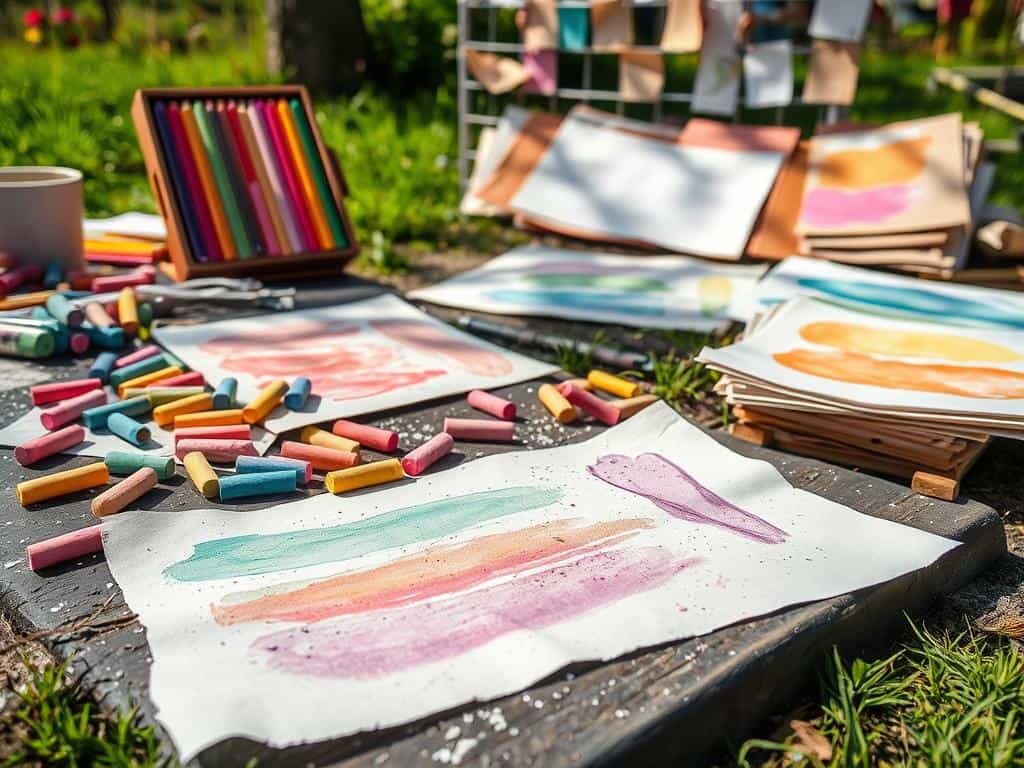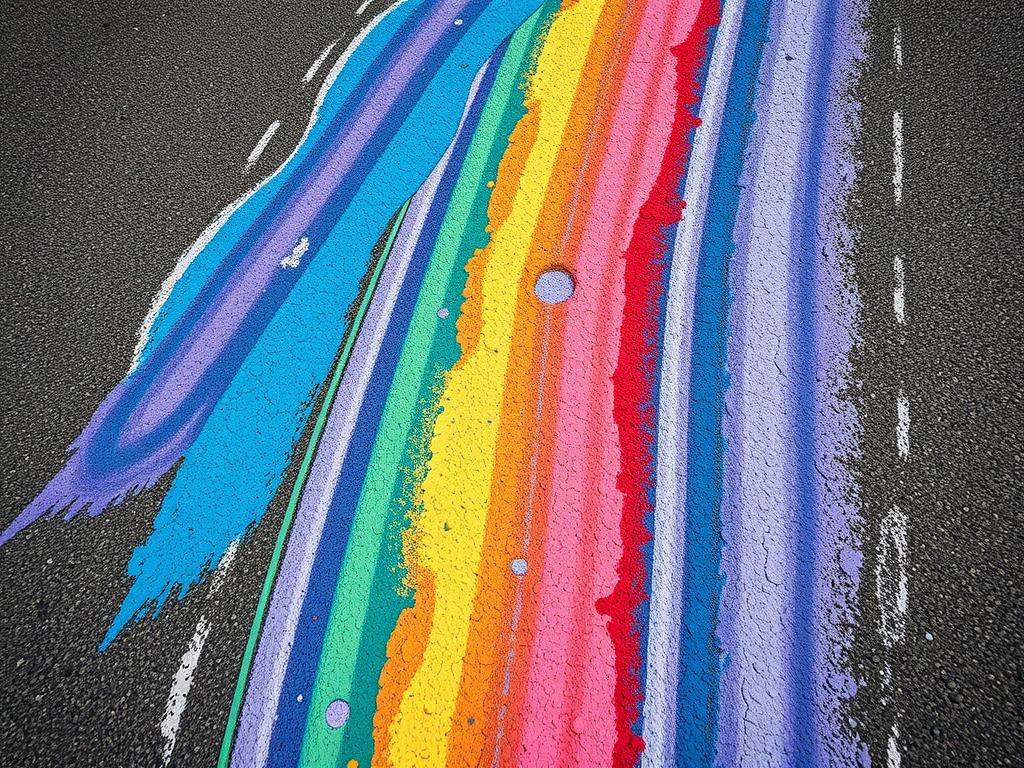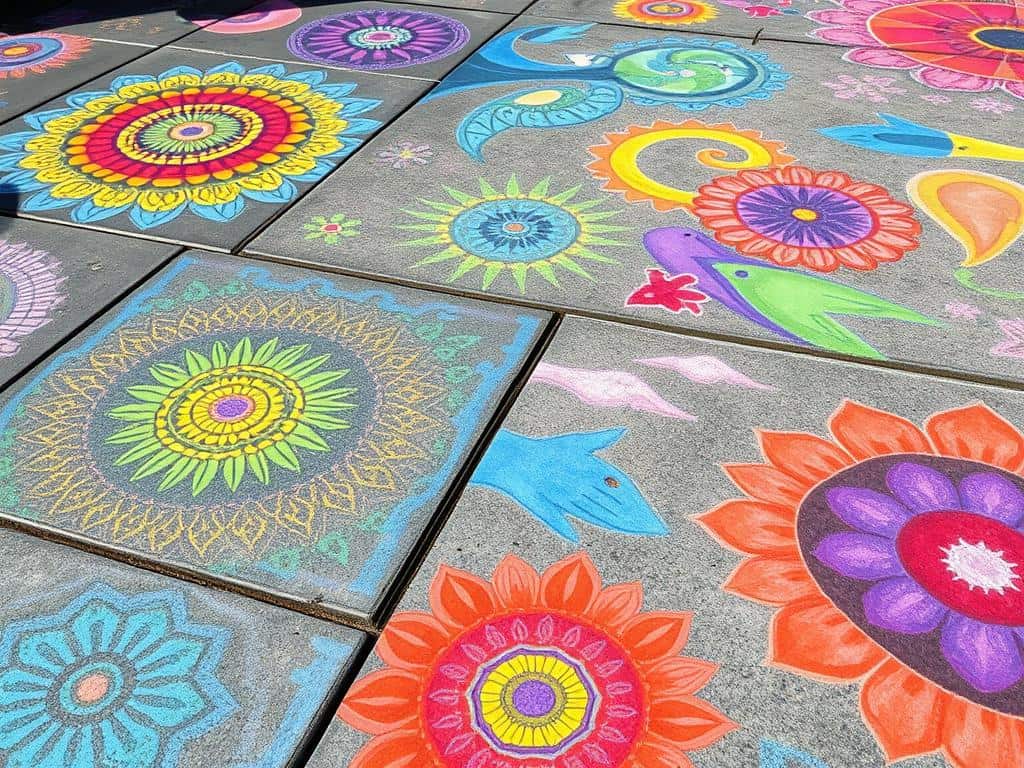As I leaned over my colorful sidewalk art, the vibrant hues began to blend and swirl. This created the delightful chaos of color I had always envisioned. Chalk art techniques had turned my mundane driveway into a lively canvas.
This temporary art display drew admiration from neighbors and passersby. With each stroke, I was reminded of my childhood. Creating murals with friends felt like an adventure.
The appeal of using chalk was invigorating. Its mess-free application and the excitement of knowing today’s masterpiece could vanish by tomorrow were thrilling. If you’ve ever wanted to dive into the world of blackboard designs or simply decorate your walkway, fear not! You too can transform everyday spaces with just a few simple tips and techniques.
In the following sections, we’ll explore various chalk art techniques. These techniques can help elevate your skills, making even the novice artist capable of creating stunning artwork. From understanding the types of chalk to mastering the blending tools, this guide will empower you to embrace your inner artist.
Add a splash of creativity to your life with these simple tips and techniques.
Key Takeaways
- Chalk art can create vibrant sidewalk art that’s both temporary and engaging.
- Learning different chalk art techniques enhances creativity and visual appeal.
- Choosing the right materials, including types of chalk and paper, is key.
- Layering and blending can add depth to your designs.
- Step-by-step instructions can simplify the process of recreating famous artworks.
Understanding Chalk Art Techniques
In my journey with chalk art, I’ve learned about different materials. Artist chalk and sidewalk chalk are two main types. Artist chalk has more colors and is softer, making art better.
I often use chalk pastel techniques with Pitt Pastel pencils and Gioconda sketch pencils. These tools help me create detailed and gradient artworks. Knowing these options helps me make stunning art.
Exploring Different Types of Chalk
There are many chalk types to explore. Slim chalk is great for details, and thick chalk makes bold lines. Artist Loft soft pastels are versatile and cost about $6 for 36 pieces.
Chalk pencils help me draw smooth lines without smudging. This knowledge improves my art’s quality.
Importance of Choosing the Right Paper
The paper I choose is key to my chalk art’s success. I use high-quality chalk paper like Legion Stonehenge or Canson Mi-Teintes. They have the right texture for chalk.
Low-quality papers can ruin layering techniques, making art look flat. Unhandled paper prevents oil residue issues, keeping my art vibrant. Choosing the right chalk and paper is essential for lasting art.

Six Simple Techniques to Elevate Your Chalk Art
Mastering layering and blending colors is key to bettering my chalk art. These skills add depth and richness to my work. By using different shades or contrasting colors, I can create warmth or drama.
This process is not just about color layering. It’s also about making colors work together. This way, I can express emotions in my art.
Layering and Blending Colors
Color layering in chalk art brings out textures and depth. I use different chalk types for vibrant strokes and versatile work. This mix of chalks makes each layer interact beautifully.
Blending techniques, like finger blending and cross-hatching, are essential. They help me get realistic shadows and light in my art.
Utilizing Blending Tools
To improve my chalk blending, I use special tools. Blending stumps and Sofft tools are great for smooth transitions and unique effects. I also try out fuzzy airbrush tips and makeup brushes for different textures.
Exploring these tools helps me grow as an artist. It helps me find my style in the chalk art world.

Conclusion
In this guide, we’ve covered the basics of chalk art techniques. These methods can turn simple surfaces into amazing sidewalk art. Learning to master chalk art means knowing your materials and trying out different ways to create.
It’s a fun way for people, and kids in particular, to improve their fine motor skills. This makes the whole process both fun and educational.
Outdoor chalk art lets us connect with nature and spark our imagination. Chalk can be used in many ways, from blending with pastels to making 3D designs. I invite you to go outside, pick up your chalk, and make your own sidewalk art.
Chalk art is more than just drawing; it’s a way to explore creativity everywhere. Whether you’re doodling on a chalkboard or making big murals, the joy is unmatched. So, let your creativity shine and try out these techniques. Your canvas is waiting!



